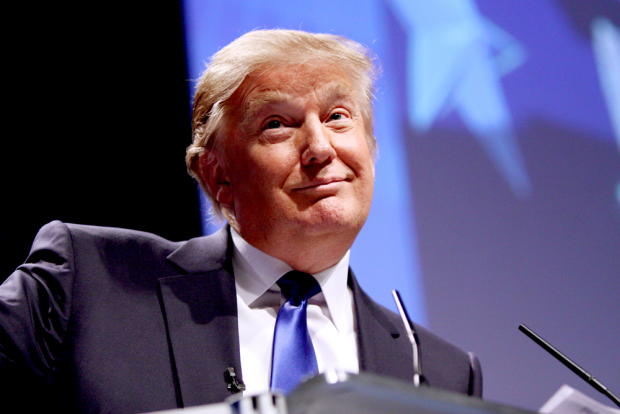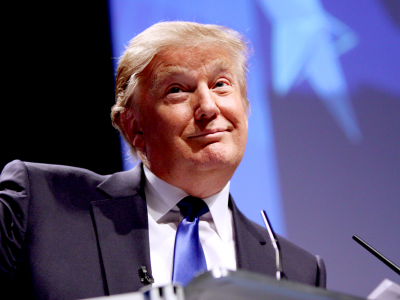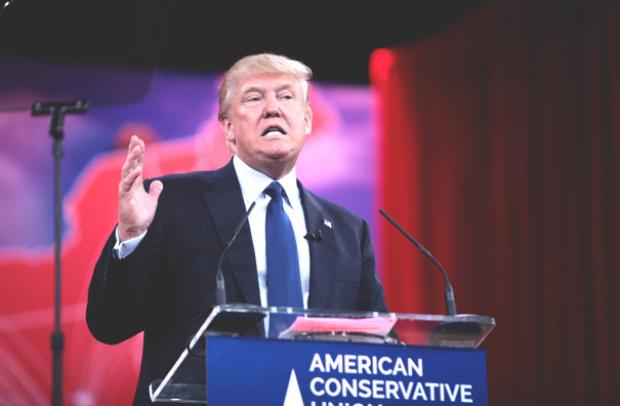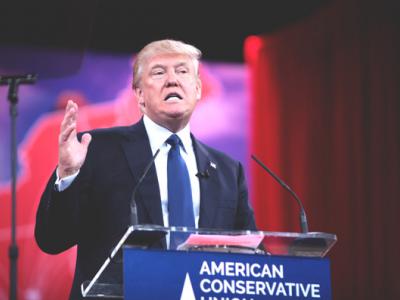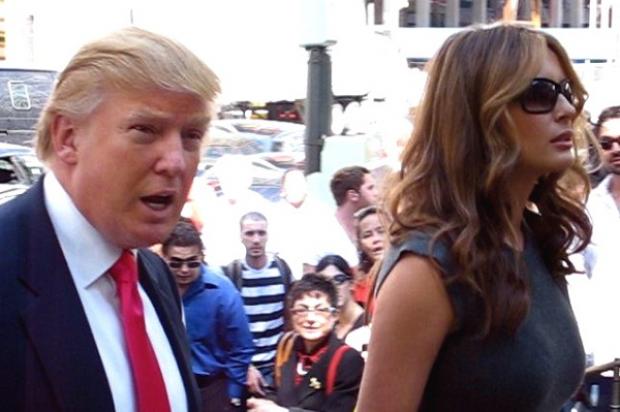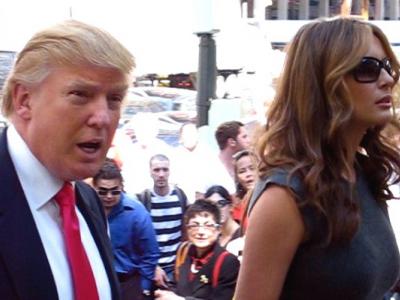Trump's orange revolution
The candidate that lobbyist and political consultant Paul Manafort advised was not a polished politician. He was prone to outbursts and many questioned whether he had the proper temperament for the presidency. His subsequent campaign took place in a highly-charged media environment, full of barely-concealed threats, brazen displays of unprecedented hostility, routine violations of political and social norms, and many other provocations that appeared to be designed to undermine faith in the electoral process itself. He, some noted darkly, was obviously the choice favoured by the Kremlin. Eventually, Viktor Yanukovych claimed victory in the 2004 Ukrainian presidential contest, though few could expect the chaos that would result.
This year, the RAND Corporation did a study on the communications style that Russia used after its Crimean annexation – an event that had its origins in Yanukovych’s first victory – that makes for fascinating reading. It suggests that the Kremlin has effectively updated Soviet-era propaganda methods and merged it with 21st century media techniques. The rules of thumb that RAND derives from Russian propaganda methods in 2014 are as follows:
1. Give people a lot of information all at once through as many channels as possible.
2. Disseminate your message quickly, and make it a highly repetitive one.
3. Don't worry at all about lying or presenting incomplete or otherwise inaccurate information.
4. Don't worry at all about whether your story contradicts itself.
It is perhaps uncomfortable how well these rules of thumb map to the efforts by one candidate in the 2016 US presidential campaign, who also hired Manafort to work for him, and who also doesn't seem to have much use for extant political norms.
It is perhaps uncomfortable how well these rules of thumb map to the efforts by one candidate in the 2016 US presidential campaign, who also hired Manafort to work for him, and who also doesn't seem to have much use for extant political norms. That Manafort had any effect on the generation of these rules seems hard to prove; that, as a figure who eventually worked on media campaigns for a political party that was openly calling for the disintegration of Ukraine into Russia, he would have been unaware of Kremlin tactics seems hard to deny. And although Donald Trump probably has something of a knack for this media approach naively, it’s also the case that the kinds of deliberate strategies that Manafort might have learned abroad would find a natural home in a Trump campaign.
It’s generally hard to parse out chicken and egg here. To some degree, it’s possible that some of the methods identified by RAND themselves arose out of careful observation of recent US. elections, with their increasing appeal to Colbertian truthiness. Manafort, who advised a number of Republican presidential campaigns before peddling his services to such A-list clients as Ferdinand Marcos and Mobutu Sese Seko, would certainly have been highly connected to figures in the Republican party promoting the latest trends in political messaging. Call it, as one source for this piece described, a case of possibly convergent evolution. In that context, it’s worth examining the sort of advisory roles that Manafort took in eastern Europe in some greater depth.
Manafort in Ukraine
After Yanukovych’s 2004 victory, in a campaign that also saw his opponent Viktor Yushchenko mysteriously poisoned with dioxin, his coronation did not last long. Denunciations of the results quickly arrived from international capitals, which frequently cited widespread voter fraud and intimidation. Even as Russia defended the results; the 2004 runoff tallies were finally nullified by the Ukrainian Supreme Court even as hundreds of thousands of Ukrainian citizens massed for nationwide protests. Eventually, Yushchenko was seated, and a vote of no confidence prompted the resignation of Yanukovych.
Manafort, however, was totally undeterred by this bad news. He continued work in Ukraine for Yanukovych's Party of Regions in their 2006 parliamentary campaigns, and again on Yanukovych's successful 2010 bid for the presidency, where he counselled the candidate on ways to present a more polished media appearance, employing techniques that he had honed over a lifetime working in US campaigns.
Yanukovych's second term lasted longer than the first – three years – before widespread protests eventually forced him to abdicate his post yet again, and this time flee to Moscow. Even this, however, was not enough to dissuade Manafort from working with Yanukovych's chief of staff in an advisory role, advising the Party of Regions on its subsequent parliamentary campaign, and, as the Washington Post notes, on how to generate influence in the United States. As the New York Times also reported this year, this took place roughly around the time that Manafort might have been paid roughly $12M by the Ukrainian government.
Most of what Manafort did for his Ukrainian sponsors was to counsel them on how to run a campaign. He reportedly took this role very seriously, and tried to control every aspect of the Party of Regions media presentation, and generally advised its membership on how to run an American-style election campaign in the 21st century.
The fact that the Party of Regions was favoured by, and close to Russia, was well known. The precipitating event that caused the second ouster of Yanukovych was his sudden decision to accept a Russian bailout for Ukraine after rejecting a planned agreement with the European Union. The subsequent nationwide protests that flooded Kiev's main square subsequently turned violent, and a crackdown by the security services left 100 people dead. This crisis provided the pretext that Putin needed to seize Crimea and launch a covert invasion of Eastern Ukraine.
Obviously, the fact that Russia has shown repeated interest in and support for the Trump campaign has also been well-documented in this campaign, as has the fact that the relationship appears to be reciprocal. Trump has also appeared on Russia Today praising Putin.
Special Methods
The RAND study also makes for fascinating reading about why the messaging approach that the Kremlin took after these events turned out to work exceptionally well. Roughly, in a context in which verity is no longer a primary means of evaluating a political claim, constancy and repetition will supplant the truth. Put more simply: a single memorable meme is more valuable to shaping perceptions than any number of carefully-explained policy positions.
What his campaign has essentially figured out is that propaganda and social media make an uncomfortably close pairing.
Similar methodology seems to have taken special root in Trump’s campaign, which has seized readily on heurisms and nicknames such as "low-energy Jeb" or "crooked Hillary" or "Make America Great Again." Trump has also been relentlessly repetitious in his message, for instance in repeatedly describing his now-infamous off-camera language on an Access Hollywood bus as "locker room talk." All US political campaigns have been drifting towards the rules of social media for several years now, but Trump has been so insistent on these kinds of approaches that they might be seen to constitute a difference of kind, as well as degree.
What his campaign has essentially figured out is that propaganda and social media make an uncomfortably close pairing. The full sociopolitical implications of that statement are beyond the scope of this article, but in a world in which once-authoritative "old media" voices are struggling to stay afloat while sites like Twitter and Facebook make their revenue by facilitating as large a pipeline as possible for information by volume, this was perhaps inevitable. Add in the fact that news outlets, like Russia Today, enjoy rare market sustainability precisely because they are state-funded, and you have reason to be highly pessimistic about the future media landscape.
Plentiful examples abound from any given week in the 2016 campaign demonstrate Trump utilising each of the above tactics listed in the RAND study, but let's just look at items from the final presidential debate.
Give people a lot of information all at once through as many channels as possible.
Trump's campaign was promoting content from the debate simultaneously on social media while the debate was taking place.
Disseminate your message quickly, and make it a highly repetitive one.
Trump not only covered a dizzying number of topics during the debate, often within the same question, but returned to highly repetitious claims against Hillary over and over again.
Don't worry at all about lying or presenting incomplete or otherwise inaccurate information.
That Trump routinely lies during debates has itself become a small cottage industry for fact-checking services. That politicians lie is of course is a truism, but one can make the case that in this regard, Trump is in a class all his own.
Don't worry at all about whether your story contradicts itself.
It's also possible to read many of the claims debunked in the Washington Post article not just as dishonest, but also as showing a fundamental cynicism towards presenting the truth at all.
One additional effect from the stream of nonsense that Trump routinely parades is a flattening of the news, so that more outlandish news has the effect of crowding out more substantive stories, for instance that Trump appears to be funneling money from his campaign to his businesses or that his advisors are being federally investigated for their ties to Russia or that senior members of the US intelligence community have expressed grave misgivings about the implications of a Trump candidacy.
It's highly concerning that this propaganda-led strategy might be part of American politics going forward, but RAND offers some possible antidotes to this strategy. In short, if candidates and the media respond early with a highly repeatable counter-narrative and can be first into new platforms, it may help to offset explicit propaganda efforts. Still, the drift away from fact-based discussion into “truthy” marketing efforts seems to have gotten an especially brisk push from this campaign season.
RAND also suggests that counter-efforts could take the form of limiting media exposure, which, to the degree that this suggests unplugging Twitter, seems impractical. It's also hard to know which accounts in social media should be deleted.
But there may be hope that Donald Trump is a one-of-a-kind sort of candidate and that these methods will fade with his hopefully failed campaign. If nothing else, greater awareness of these sorts of methods may help to inoculate against their use.
The author is a former analyst with the US Department of Defence, who wishes to remain anonymous

